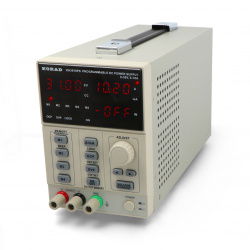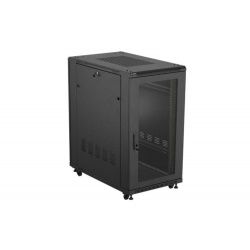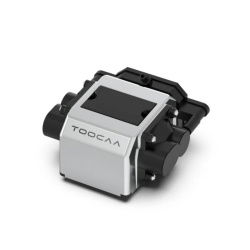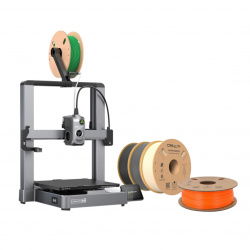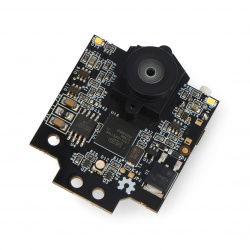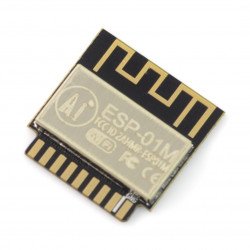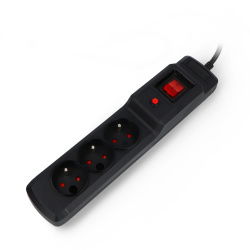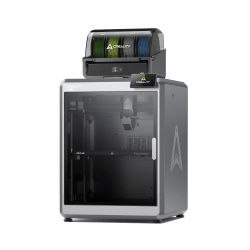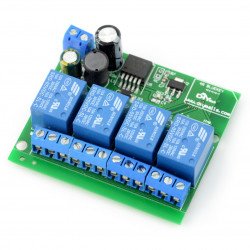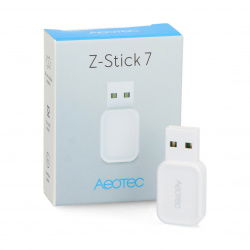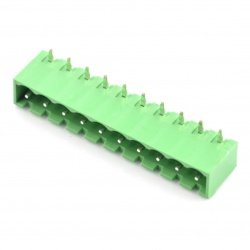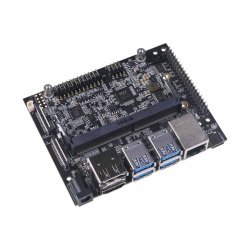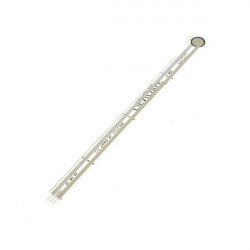Embedded systems are a very important element contained in the design of many contemporary physical applications, such as home automation, industrial processing in factories, measurement instruments, vehicles and machines, games and toys, household appliances, as well as communication devices and information systems. In most of the embedded systems, a fundamental element is a microcontroller - an integrated circuit, which, like a microprocessor - reading data from memory and executes a set of instructions contained in the program source code that is stored in a non-volatile memory. A typical microcontroller usually has lower computing power than a microprocessor, but is capable of autonomous operation thanks to the built-in memory and peripheral systems. One of the leading manufacturers of microcontrollers is the Microchip company. In 2016, Microchip Technology Incorporation have acquired Atmel Corporation, known for its AVR microcontrollers, such as Atmega328p used in Arduino boards, which are still being manufactured under the Microchip brand. In addition, Microchip also offers genuine series of PIC microcontrollers built into the development board. It is a versatile tool with which you can learn the basics of microcontrollers hardware and software operating, as well as making of prototype designs of control systems for numerous physical processes, such as electric gate controller or DSP systems for an advanced sound processing.
PIC
P-Star 25K50 Micro PIC18F25K50 - Pololu 3150
Module equipped with Microchip PIC18F25K50 microcontroller with installed bootloader. It is equipped with 16 digital inputs/outputs and popular communication interfaces. Power...See also
Hardware design of the PIC microcontrollers
One of the most popular low-level programming languages in microprocessor technology are Assembler and C. To program a PIC microcontroller, in addition to the basics of programming language syntax, it is very helpful to learn and understand the hardware structure of the microcontroller. Similarly to well-known AVR microcontrollers (e.g. Atmega8) or Intel (e.g. 8051 - currently produced by Microchip), PIC microcontrollers are equipped with registers, address buses, memory systems as well as peripheral systems. Such microcontrollers were designed following the Harvard architecture, in which two memory blocks operate - the first of them is the EPROM/EEPROM or FLASH memory block, that contains the program source code - a set of instructions. The program memory is non-volatile - it means that after switching off the supply voltage, the memory content will not be erased. The second memory block - usually it is SRAM - allows the quick download of data necessary to perform computational operations by the arithmetic-logic unit (ALU), according to the instructions for executing the instructions contained in the program code stored in non-volatile memory, while in oppose to EPROM/EEPROM and FLASH - SRAM is a volatile memory. All of the memory chips are built-in under the same package as well as other internal parts of the PIC microcontrollers. The design also includes useful peripheral circuits such as ADC converter with multiplexer, watchdog timer, programmable digital I/O’s that are fully compatible with TTL logic level (5V), PWM outputs, and other must-have - the external clock oscillator input, as well as the power (VCC and GND) and programming terminals. To write a program code to the EEPROM/FLASH memory of PIC microcontroller, you need a software development environment with a code compiler that converts the program code to the .hex-type files, as well as a hardware programmer with a debugger, which is a bridge between the computer and the microcontroller.
PIC evaluation boards - ease of use and high versatility at an affordable price!
The Botland store offers high-quality development boards with a PIC microcontroller, which, thanks to the low energy consumption, perfectly evaluate their tasks as small control units for both simple and complex applications. The Pololu P-Star 25K50 module is based on the PIC18F25K50 microcontroller clocked at 16MHz. The major highlight here is a wide range of supply voltages (from 1,8 V to 5,5 V), as well as negligible power consumption in sleep mode, thanks to which the P-Star 25K50 board will work on portable devices (e.g. remote-controlled vehicles). A bootloader has been burned into the microcontroller memory, so there is no need to use the external programmer module and all you have to do is just connect the board to the USB port in your PC by using the USB cable included that is included in the kit. The P-Star kit also includes soldering goldpin strips that make it easy to connect the board to external devices via 16 I/O onboard pins. In addition to the microcontroller and USB connector, the board is equipped with LEDs and a RESET button. The board is compatible with MPLAB X software development environment, which you can download for free from the Microchip website, as well as support instructions covering details of software installation and the basic projects which you can make by using the PIC boards.






























































































































































































































































































































